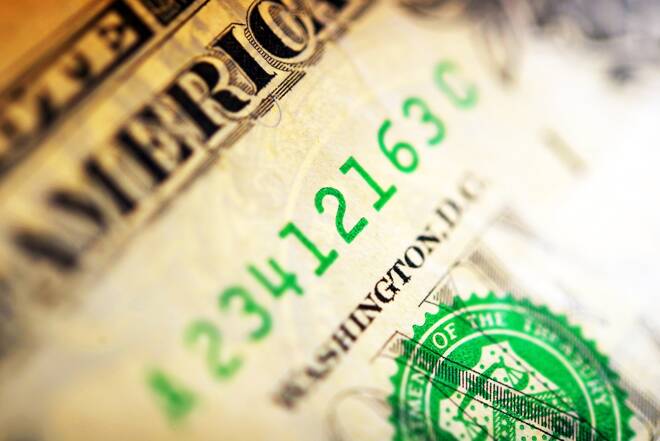Advertisement
Advertisement
Economic Data Puts the EUR and the Loonie in Focus Ahead of the FED
By:
Economic data from Germany and the Eurozone will draw interest ahead of the main event of the day. With the markets expecting the FED to stand pat, the rate statement will be key.
Earlier in the Day:
It was a busier start to the day on the economic calendar this morning. The Japanese Yen and the Aussie Dollar were in action this morning.
For the Japanese Yen
According to the Ministry of Economy, Trade and Industry, retail sales jumped by 5.2%, year-on-year in March. Retail sales had fallen by 1.5% in February.
The Japanese Yen moved from ¥108.731 to ¥108.788 upon release of the figures. At the time of writing, the Japanese Yen was down by 0.22% to ¥108.94 against the U.S Dollar.
For the Aussie Dollar
Inflation figures were in focus this morning.
In the 1st quarter, consumer prices rose by 0.6% quarter-on-quarter, following a 0.9% rise in the 4th quarter of last year. Year-on-year, consumer prices increased by 1.1%. In the 4th quarter, consumer prices had risen by 0.9%.
The numbers fell short of forecasts, weighing on the Aussie Dollar. Economists had forecast an annual rate of inflation of 1.4% and for consumer prices to rise by 0.9% quarter-on-quarter.
According to the ABS,
- Automotive fuel prices jumped by 8.7% in the March quarter, with prices for hospital services and pharma products increasing by 1.5% and by 5.3% respectively.
- Prices for accessories increased by 7.3%, highlighting improving consumer confidence as demand for non-discretionary items picked up.
- Year-on-year, price increases in tobacco and furnishings were partially offset by falls in rents, automotive fuels, and utilities.
- The trimmed mean rose by 1.1%, which was the lowest annual movement on record. In the December 2020 quarter, the trimmed mean had risen by 1.2%.
The Aussie Dollar moved from $0.77559 to $0.77255 upon release of the figures. At the time of writing, the Aussie Dollar was down by 0.44% to $0.7731.
Elsewhere
At the time of writing, the Kiwi Dollar down by 0.18% to $0.7195.
The Day Ahead:
For the EUR
It’s a relatively quiet day ahead on the economic data front. Consumer confidence figures for Germany will be in focus going into the European open.
With consumer spending a key component of the economic recovery, we can expect some EUR sensitivity to the numbers.
Any material downside to the EUR may be limited, however, with market optimism continuing to support the EUR at current levels.
At the time of writing, the EUR was down by 0.12% to $1.2076.
For the Pound
It’s yet another particularly quiet day ahead on the economic calendar.
There are no material stats to provide the Pound with direction. A lack of stats will continue to leave the Pound in the hands of COVID-19 news and government plans to further ease lockdown measures.
At the time of writing, the Pound was down by 0.26% to $1.3877.
Across the Pond
It’s a relatively busy day ahead on the economic calendar. Trade data and inventory numbers are due out later in the day.
We don’t expect too much influence, however, with the FOMC monetary policy decision the main event of the day.
The markets are expecting the FED to stand by its low for longer policy outlook. Any deviation from the script and expect the Dollar to respond.
At the time of writing, the Dollar Spot Index was up by 0.09% to 90.990.
For the Loonie
It’s relatively busy day ahead on the economic calendar. Retail sales figures for February are due out later in the day.
Following the BoC’s hawkish outlook, any weak numbers would test support for the Loonie on the day.
While the stats will influence, crude oil inventory numbers will also be in focus on the day.
At the time of writing, the Loonie was down by 0.13% to C$1.2415 against the U.S Dollar.
For a look at all of today’s economic events, check out our economic calendar.
About the Author
Bob Masonauthor
With over 28 years of experience in the financial industry, Bob has worked with various global rating agencies and multinational banks. Currently he is covering currencies, commodities, alternative asset classes and global equities, focusing mostly on European and Asian markets.
Advertisement
